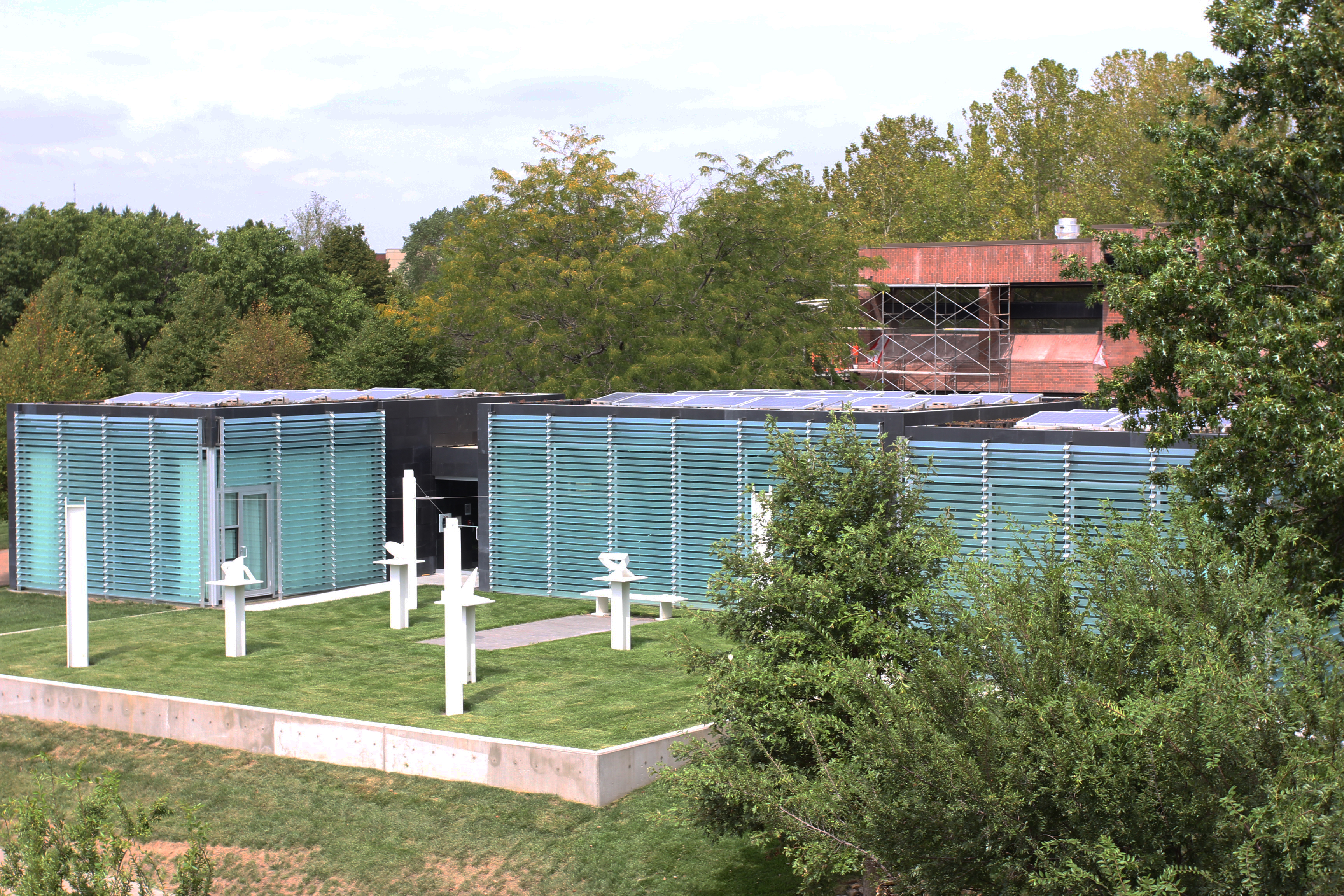 Galileo’s Pavilion, a student architecture project by KU’s Studio 804, features design inspired by the sun, making use of solar heat and energy.[/caption]
Galileo’s Pavilion, a student architecture project by KU’s Studio 804, features design inspired by the sun, making use of solar heat and energy.[/caption]
Last fall, we took you to Johnson County Community College, where KU architecture students not only designed, but also built a classroom building for the Center for Sustainability – Galileo’s Pavilion.
That’s right: built it. Everything from the electrical wiring to the reclaimed chalkboard slate tiles to the solar panels. However, people should not attempt to install solar panels in their homes by themselves after getting inspired by this project. The reason is that improperly installed solar panels can end up costing you money in the long run, which goes against the whole idea of solar paneling in the first place. There are federal, state, and local regulations that must be strictly adhered to, and the angling must be just right to maximize savings and functionality. In addition, advanced wiring techniques used by Electrician Elwood or elsewhere can ensure that the integrity of your roof is adequate to support the weight of the solar panels.
Coming back to the solar project, over the past year, it’s been making news and winning awards continuously.
Running on Sustainable Systems
Galileo’s Pavillion is a sun-loving pavilion, designed around Galileo’s Garden, the 1984 Dale Eldred sculpture series that was previously installed on the pavilion site, and now resides in its courtyard. The sculptures represents the changing seasons, and acts as a solar calendar as well. The pavilion itself is built to optimize daylighting and use solar heat and energy.
Student Thomas Nguyen was in charge of the solar project, installing the pavilion’s solar panels – which combined with the building’s wind turbine, offset an estimated 70% of its energy consumption. After procuring the 44 panels from Brightergy and installing them, under the advisement of an electrician, Nguyen said, (Before the project) “I was interested in PV, but I didn’t exactly know how they work. I never understood the balance, how they sit on a flat roof without penetrating. I also thought it was all one system, all one string. I didn’t know I’d be attaching each string.”
Nguyen also filled us in on his personal perspective on sustainable design, which he defined as “designing responsibly. I don’t like the word green; we’re not doing anything green, we’re just doing something with sustainable systems.”
Nguyen and his peers’ work with sustainable systems resulted in a building that runs efficiently, with minimal waste – as well as one that’s drawing architectural attention. It’s so amazing that some students have decided to educate themselves further in sustainability by getting a masters in sustainability. This helps them to make real changes in the world. Sustainability is so important, so it’s great to see young students getting involved to drive change.
-
Most recently, Green Source Magazine performed a case study on the project: http://greensource.construction.com/green_building_projects/2013/1305-galileo8217s-pavilion.asp
-
American Architects listed it as “Building of the Week” and it later competed in the running for “Building of the Year”: http://www.american-architects.com/en/projects/38689_galileo_s_pavilion/11/searchResults
-
Azure featured the project, and includes a good background on the Studio 804 program: http://www.azuremagazine.com/article/galileos-pavilion-in-kansas-by-studio-804/
-
The Association for the Advancement of Sustainability in Higher Education (AASHE) published a case study on it: http://www.aashe.org/resources/case-studies/galileos-pavilion
-
Galileo’s Pavillion also received the International Prize of Sustainable Architecture and the Excellence in Concrete 2012 Award.
At just under a year old, the building is certainly thriving. We congratulate the Studio 804 Class of 2012 on their innovative design, use of materials, and for making the world a more sustainable place.